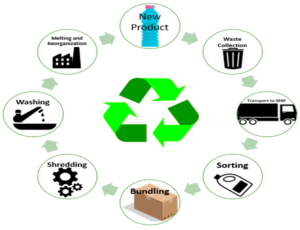Plastic waste is a major environmental problem. Every year, millions of tons of plastic end up in our oceans, landfills, and waterways. This plastic can take hundreds of years to break down, and it can harm wildlife and pollute our environment.
Do you ever wonder where all your plastic waste goes?
- Does it end up in a landfill, where it can take hundreds of years to break down?
- Or does it end up in the ocean, where it can harm marine life and pollute our waters?
The truth is, it’s a little bit of both. Every year, millions of tons of plastic waste end up in our environment. Since 1950, human activity has produced 8.3 billion metric tones of plastic, of which 6.3 billion metric tones have been converted into waste, and only 9 percent of that rubbish has been recycled. And it’s only getting worse.
But there is hope!!
There are a number of eco-friendly alternatives to plastic packaging that are available. By choosing these alternatives, we can help to reduce plastic waste and protect our environment.
In this blog post, we will explore some of the most promising alternatives to plastic packaging. As consumers, we can all play a role in reducing plastic waste. We will also discuss how businesses and consumers can work together to create a more sustainable future.
What are the alternatives to plastic packaging?
There are a number of eco-friendly alternatives to plastic packaging available. As per a leading market report, recycling packages are all set to grow to $313.93 billion in 2025 up from $237.74 billion in 2019. With widespread adoption by big-wigs of the world, the tide is certainly shifting towards a massive change. Some of the most promising alternatives include:
-
Paper:
Paper is a renewable resource that is biodegradable and compostable. It can be used to make a variety of packaging materials, such as bags, boxes, and wrappers.
-
Cardboard:
Cardboard is a strong and durable material that is also recyclable. It can be used to make a variety of packaging materials, such as boxes, trays, and inserts.
-
Glass:
Glass is a non-porous material that is inert and non-toxic. It is also infinitely recyclable. Glass packaging can be used for a variety of products, such as beverages, food, and cosmetics.
-
Compostable plastics:
-
Biodegradable plastics:
Microorganisms break down materials used in biodegradable plastics. However, unlike compostable plastics, biodegradable plastics do not always break down completely. Some biodegradable plastics can still leave behind microplastics, which can pollute our environment.
-
Reusable packaging:
Reusable packaging is the best alternative to plastic packaging. Using it repeatedly reduces the need for disposable packaging. Some examples of reusable packaging include canvas bags, reusable water bottles, and
How can businesses and consumers reduce plastic waste in packaging?
There are a number of things that businesses and consumers can do to reduce plastic waste in packaging:
-
Choose eco-friendly packaging materials:
When purchasing products, seek packaging made from recycled or recyclable materials. Avoid products packaged in single-use plastic.
-
Reusable packaging:
Consider using reusable packaging, such as canvas bags or reusable water bottles. This will help to reduce the amount of disposable packaging that ends up in landfills or oceans.
-
Compostable packaging:
If you use disposable packaging, opt for compostable packaging that can be broken down in a compost pile or industrial composting facility.
-
Recycle packaging:
When you finish with packaging, make sure to recycle it properly. This ensures proper disposal and prevents it from ending up in landfills or oceans.
-
Support businesses committed to reducing plastic waste:
When you are shopping, look for businesses that are using eco-friendly packaging. This will help to send a message to other businesses that there is a demand for sustainable packaging.
Other Initiatives for Greener Future
-
Plastic-Free Initiatives and Zero-Waste Living:
Plastic-free initiatives and the concept of zero-waste living are gaining momentum worldwide. These initiatives encourage people to reduce single-use plastic consumption and adopt reusable alternatives in their daily lives, fostering a culture of sustainability.
-
Corporate Responsibility and Circular Economy:
Businesses play a crucial role in combating plastic waste. Embracing corporate responsibility and adopting a circular economy approach can minimize waste, optimize resources, and promote sustainable practices across the supply chain.
-
Government Policies and Regulations:
Effective policies and regulations are vital in curbing plastic pollution. Governments worldwide must implement laws that incentivize sustainable practices, discourage single-use plastics, and encourage the adoption of greener alternatives.
-
Educational Awareness and Advocacy:
Educating the masses about the environmental consequences of plastic waste is essential. Awareness campaigns and advocacy initiatives can empower individuals to make informed choices and participate actively in the fight against plastic pollution.
Conclusion
Plastic waste is a major problem, but there are a number of things that we can do to reduce it. By choosing eco-friendly packaging materials, using reusable packaging, and recycling properly, we can all help to create a more sustainable future. Governments, businesses, and individuals must collaborate to create a greener future, where we minimize plastic waste and our planet thrives.
Together, we can make a difference.





